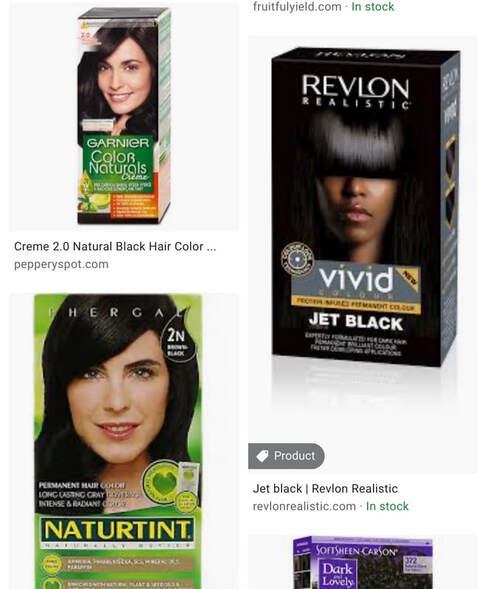|
Several years ago, I fell for it too. Browsing the hair color section in Whole Food, I saw these green packages of hair color boldly claiming "NO AMMONIA", "NO PARABENS", "With ingredients of NATURAL origin". Without a second thought, I picked up a box and colored my hair. It was cheap, quick, and fast. The color didn't stay very long but hey, I could keep doing this every 3 weeks and no harm, right? WRONG!!! So here are five things you most probably do not know (but should) about hair color.
One: It does not matter what the brand is, the fact is almost all dark hair dyes contain a monstrous chemical called para phenlylenediamine (or PPD). This chemical can also be found in "black henna" - also used to color hair or in instant temporary tattoos. Read more about PPD on the EWG database. So why is this chemical so terrible? According to this paper, exposure to PPD can cause "primary sensitization, resulting in subsequent allergic contact dermatitis. Skin and mucosal manifestations may differ, but they are usually characterized by pruritus, erythema, and vesicular or even bullous dermatitis in severely affected patients". To translate - symptoms of allergic reaction to PPD include itching, reddening or rashes on skin, or in the extreme cases, inflammation of skin accompanied by pus. The scary part is that sensitization of the skin to PPD is cumulative - meaning the more you're exposed, the more sensitized your skin becomes. So even though the green box with the leaf logo says "Contains natural ingredients" run away from dark hair dyes. Two: what is in a developer? Most semi or permanent hair dyes come with a developer. This cream contains hydrogen peroxide - a bleaching agent that penetrates the hair cuticle to enable the color to bind with hair. Hydrogen peroxide is a very reactive molecule - all the antioxidants that are the rage of the day are intended to quench this molecule that is produced as part of a chemical reaction when your skin is exposed to ultraviolet rays of the sun for example. So treating your hair with hydrogen peroxide is going to damage your hair eventually. Three: "With ingredients of natural origin" is a marketing phrase intended to cheat you. You see the green color packaging, the two leaves on the box, a stamp "With ingredients of natural origin" and you pick up the box with a smile thinking "here at last is a product that is safe for my hair. It has no ammonia, no parabens, no sulfates, no cyande". Here's the thing - if you make a dish of meat with some vegetables thrown in and present it to a vegetarian as "Gourmet dish containing fresh, locally, grown organic vegetables" that is not the same as "This dish is vegetarian". So next time you see a line like this, tell yourself that the brand is not to be trusted. Four: A product that advertises what it does NOT have is also not to be trusted. "No parabens", "no sulfates", "no ammonia", "no artificial fragrance" ... can mean NOTHING. In the case of the Naturtint dyes, "NO AMMONIA" but "YES PPD". What good is that? "NO SULFATES" in a shampoo but "YES DMDM hydantoin" (a preservative). How is a consumer expected to make choices when factually a product advertises it does not have one ingredient that is bad but does not advertise two that are terrible??? And finally, Five: There is a gene that has been linked to going grey. While genetics is not the only reason why hair becomes deficient in melanin (the pigment giving it its color), it can be one reason why some people grey faster than others. And if that happens to be a predominant reason, there is not a thing you can do to stop it! So the healthy options to deal with dark hair going grey are: 1) Use plant based dyes - a mixture of henna and indigo works well. However this is time consuming and messy 2) Let it go grey! Leave a comment with your thoughts!
0 Comments
Leave a Reply. |
|
|
© Saroya Natural 2023 | All rights reserved.
Website designed by Aadi M |
Contact Us |


 RSS Feed
RSS Feed